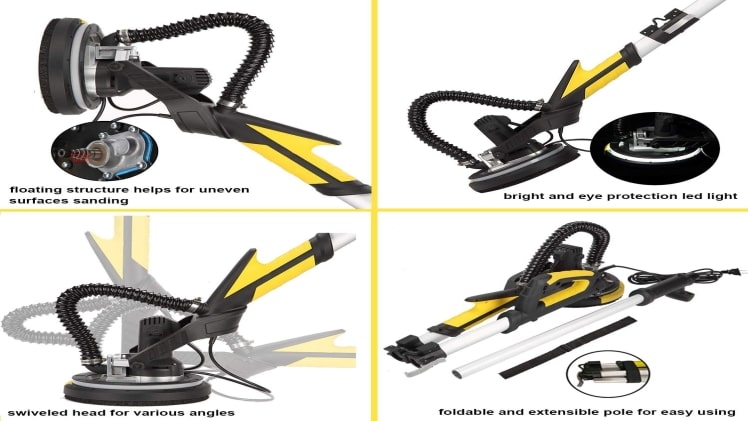If you are in the process of sanding drywall, you need to use the proper sanding technique. A professional sander drywall will be able to remove even the finest dust from the surface. Make sure to clean up all debris. You can also use masking tape to seal off air ducts. Then, you can use the right sanding technique to achieve a smooth finish. However, you should remember to use safety equipment when sanding drywall.
Before you begin sanding the drywall, it is important to turn on a work light. This will help you see the high spots or holes and determine which areas you should focus on sanding. The best sanders have a vacuum setting, so you do not have to worry about collecting dust. In addition, a dust vacuum hose will keep your sander drywall clean by sucking up dust from the surface.
A good sander should have variable speed settings. A sander with an adjustable speed trigger allows you to control the sanding action. These tools can also be equipped with dust extraction systems, so you can minimize the amount of dust in the air. Once you have the perfect sanding technique, you should carefully observe the finish. You will find that the drywall sander can produce a flawless finish. If you are looking for a tool to make the best finish, you should consider using a drywall sander.
In addition to the drywall sander, you will also need a dust collection device. You should consider purchasing an N95 facemask, which will keep you clean and prevent airborne particles from damaging the walls. The air pollution created by the machine can be dangerous, so you must wear a mask when sanding the drywall. A good mask will protect your face from harmful rays. You should be careful to wear protective eyewear, which will also protect you from any red eyes.
A Drywall sander should have a motor with a high RPM. A sander should have a variable speed range to avoid exposing the user to dust. A good sander should be lightweight, durable, and can adjust itself to uneven surfaces. It is also important to wear a mask when sanding the drywall. It should have a handle that is flexible. A sander should not be too small or too large.
The sander is the most important tool for a successful drywall repair, and it should be used in conjunction with joint compounds. If you are doing a large project, you may want to invest in an orbital sander. The latter is more expensive, but it is worth it for your sander’s many benefits. If you are working on a smaller project, you may choose a sander with a single sanding block.
A sander can be either electric or hand-held. The sander should be able to rotate at a low RPM. In order to avoid a dusty workspace, you should use a sander drywall that has a variable speed trigger. This type of sander is ideal for finishing small projects. Besides, it can be used to remove varnish and old paint. The sander drywall should not be too heavy.
The sander should have a flexible head to reach hard-to-reach places, and it should also be able to work with bare walls. The sander should be flexible enough to fit the drywall, and this is important because the drywall sander must be adjustable. The sander should have a flexible hose so that it can sand more areas. You should use a dust collector when sanding drywall.
It is also important to use a dust mask. These sanders should have a HEPA filter. Several manufacturers offer replacement pads for drywall sanders, and some sanders are made of rubber or plastic. When you buy a sander, you should look for a sander that has a dust mask. This will prevent particles from entering the air. A sander drywall is more convenient than a paint roller.
A sander is necessary for finishing the drywall, and the size of the disc is important. Some sanders are dustless, while others have dust collectors. When sanding a wall, you must protect your clothes and furniture to avoid dust from the sandpaper. If you are sanding drywall for the first time, you should make sure that you wear goggles and cover your hair. Visit Get Mirka for high-quality sander drywall.

